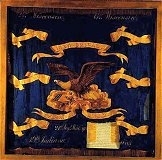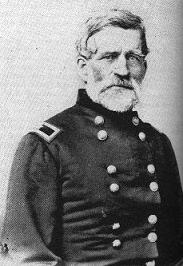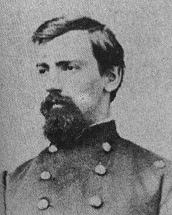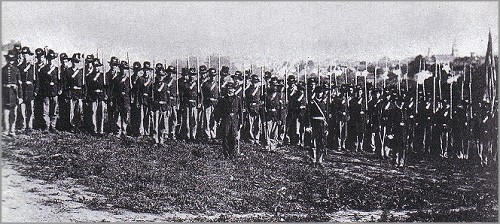
|
|
|
|
![]()
![]()
|
General
McClellan told General John B. Callis of Lancster, Wis., at the
Continental Hotel in Philadelphia when his grand reception was
given there, what he knew of the origin of the cognomen "Iron
Brigade." Said he: "During the battle of South Mountain
my headquarters were where I could see every move of the troops
taking the gorge on the Pike (National Road). With my glass I
saw the men fighting against great odds, when General Hooker came
in great haste for some orders. I ask him what troops were those
fighting on the Pike? His answer was: 'General Gibbon's Brigade
of Western men.' I said, 'They must be made of iron.' He replied,
'By the Eternal they are iron. If you had seen them at Second
Bull Run as I did, you would know them to be iron.' I replied,
'Why, General Hooker, they fight equal to the best troops in the
world.' This remark so elated Hooker that he mounted his horse
and dashed away without his orders. After the battle, I saw Hooker
at the Mountain House near where the Brigade fought. He sang out,
'Now General, what do you think of the Iron Brigade?' Ever since
that time I gave them the cognomen of Iron Brigade."
"In proportion to its numbers the Iron Brigade sustained the heaviest loss of any brigade in the Civil War." "The Iron Brigade loss at Gettysburg 1,153 out of 1,885 engaged, or 61%." "It was to the Iron Brigade more than to any other that the nation owes its salvation at Gettyburg."
|
![]()
![]()




